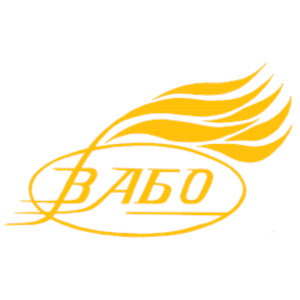METHODOLOGICAL AND METHODOLOGICAL PROBLEMS OF HYDRO-ECOLOGICAL RESEARCH OF SMALL RIVERS OF THE STEPPE
DOI:
https://doi.org/10.32782/2786-5681-2023-3.18Keywords:
methodology, hydroecological research, small rivers, hydrosystem research methods, Black Sea SteppeAbstract
The generalized experience of hydro-ecological studies of the current state and water management assessment of small rivers of the Steppe (on the example of the territory of the Mykolaiv region) indicates a clear inconsistency of the existing methodological approaches and methodological tools for working with similar objects. The latter are characterized by an extremely pronounced dependence on the state of catchments, seasonal weather conditions and anthropogenic destruction of watercourses, most of which are able to quickly transition from surface to underground flow. It is natural that the study of small drying rivers as water bodies and the evaluation of the obtained results immediately gives rise to a number of problematic issues, the experience of solving which is given in the article. Thus, the use of methods for assessing the state of small rivers on the basis of integrative indicators and bioecological indicators for open water bodies of the Steppe zone turned out to be not very effective. The main shortcomings of integral and calculation methods in their relation to small rivers functioning as part of the modern agricultural landscape of Nizhny Pobuzhzhia are outlined. The inconsistency of the results of calculation-analog methods of assessing the state of small rivers and methods of zonal-group calculations of their flow, due to the significant diversity of the ecological and morphological conditions of watersheds and watercourses belonging to them, indicates the need for field work with each specific water body. Factors affecting the ecological condition of rivers and leveling group (regional) flow calculations are given. The main reasons for inconsistencies in the methods standard in the system of hydrological monitoring of steppe rivers of Ukraine have been established. The scope of assessment and approaches and ways of adapting existing methods for researching dynamic hydrosystems of small rivers are considered, as well as possible means of detailing the morphometric parameters of flow within transformed watersheds. The lack of long-term strategic visions regarding ways to protect and exploit the surface water bodies of the zonal Steppe is of key importance in the assessment of the water management prospects of hydrosystems of small rivers in the existing conditions of nature use, taking into account the factor of climatic instability.
References
Пилипенко Ю.В. Екологія малих водосховищ Степу України. Херсон : Олді-плюс, 2007. 265 с.
Поліщук В.В. Малі річки України та їх охорона. Київ : Знання, 1988. Серія 8 «Нове в науці, техніці, виробництві». № 14.
Унікальні водні антропогенні ландшафти Поділля як перспективні заповідні об’єкти / О.В. Мудрак та ін. Збалансоване природокористування. 2022. № 3. С. 104–115. DOI: 10.33730/2310-4678.3.2022.266564, http://journals.uran.ua/bnusing/article/view/266564.
Яцик А.В., Бишовець Л.В., Богатов Є.О. Малі річки України. Київ, 1991. 296 с.
Докучаєв В.В. Наші степи раніше і зараз. 1936. 116 с.
Наконечна Ю.О. Сучасна гідрологія та гідрографія. Екологія Миколаївської області. 2020. С. 51–67.
Офіс Водних ресурсів у Миколаївській області. URL: https://mk-vodres.davr.gov.ua/ (дата звернення: 12.06.2022).
Мудрак О.В., Білявський Г.О. Пріоритетні заходи з охорони й раціонального використання малих річок Східного Поділля. Збірник наукових праць Національного університету водного господарства та природокористування. 2007. Вип. 4(40). С. 227–233.
Global monthly water stress: 2. Water demand and severity of water stress / Wada Y., van Beek L.P.H., Viviroli D., et al. Water Resour. 2011. Res. 47, W07518.
Мудрак О.В. Науково-методичні та практичні підходи до охорони й менеджменту заповідних гідрологічних об’єктів як елементів регіональної екологічної мережі (на прикладі Поділля). Охорона і менеджмент об’єктів неживої природи на заповідних територіях : матеріали міжнародної науково-практичної конференції «Охорона і менеджмент об’єктів неживої природи на заповідних територіях», смт Гримайлів, 21–23 травня 2008 р. Гримайлів – Тернопіль : Джура, 2008. С. 220–226.
Резолюця 71/222 «Вода для сталого розвитку». Генеральна Асамблея ООН. 2015. URL: https://documentsdds-ny.un.org/doc/UNDOC/ GEN/N16/460/03/PDF/N 1646003.pdf (дата звернення: 12.06.2022).
ВОЗ. Короткий аналітичний розбір. Водопостачання, санітарія, гігієна і здоров’я. (Enkhtsetseg Shinee и Oliver Schmoll) / Європейське бюро ВООЗ. Copenhagen &, Denmark. 2021. 24 c.
Дослідження та моніторинг малих річок / Р.В. Хімко та ін. Хмельницький : Тріада–М, 2005. 380 с.
QGIS Desktop. URL: https://www.qgis.org/uk/site/ about/features.html (дата звернення: 22.06.2022).
Пилипович О.В., Ковальчук І.П. Геоекологія річково-басейнової території Верхнього Дністра. Львів ; Київ : ЛНУ ім. Івана Франка, 2017. 284 с.
MapServer. Графічний сервер для програми ГІС 6, Map Draw 2 і Gis Web Client (Documentation Release 7.0.7). The MapServer Team 2018-07-27. URL: https://download.osgeo.org/mapserver/docs/MapServer-70.pdf (дата звернення: 20.06.2022).







